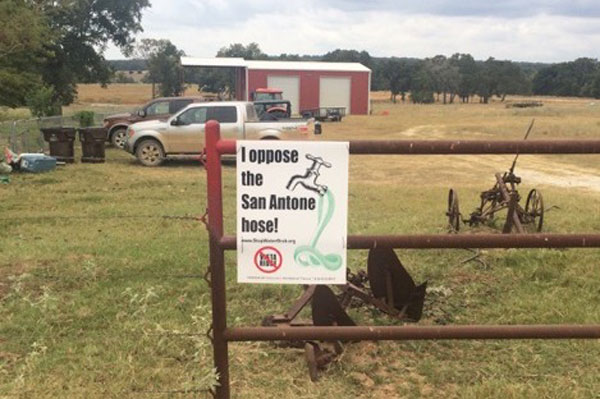- La Feria Native Soon To Retire From The Military This Summer
- Senior Eneece Avila Takes Pride in her State Title
- Dr. Noemi Infante, Harlingen Medical Center Open New Women’s Clinic
- Santa Rosa Cameron County Park Partially Reopens
- Santa Rosa Takes to Regionals Meet in Kingsville, Tx
- Long-Standing Nexstar Tower in La Feria Decommissioned
- Lionettes Powerlifting Meet
- Local Business Holds Event to Benefit RGV Shriners Club
- Knights of Columbus Holds it’s 30th Annual Golf Tournament
- KGBT Tower Dismantled
Environmental Groups Fight Proposed Texas Water Pipeline
- Updated: April 15, 2016
by Mark Richardson
AUSTIN, Texas – A coalition of environmental groups has filed a protest with the Texas Water Development Board over a request for more than $1 billion in low-interest state loans to build a controversial 142-mile water pipeline.
Clean Water Action, Environment Texas, Environmental Stewardship and Save Our Springs Alliance claim the Vista Ridge water pipeline is not eligible for public funds.
Lauren Ice, an attorney for Save Our Springs Alliance, says those who are developing the project need to have some skin in the game.
“We’re all opposed to the project in general but the idea that public-private partnership, the way it’s set up, the fact that they could then go after public funding for the project and that they’re going after conservation funding – is just an added insult on top of all the other problems that there are,” says Ice.

A landowner in Burleson County posts a sign opposing the Vista Ridge water pipeline project, which would pump billions of gallons from a local aquifer 142 miles to San Antonio. Photo: SOS Alliance
The pipeline is being developed by the San Antonio Water System and several private firms. When completed, it would deliver more than 16 billion gallons of groundwater from Burleson County in north central Texas to San Antonio every year.
Ice says the project’s backers have requested funding through a special state program called the SWIFT Fund, which was set up in 2013 to assist with water management strategies by public entities.
She says Vista Ridge backers, including the San Antonio Water System, are trying to get around the regulations by creating a shell company, the Central Texas Regional Water Supply Corporation, which is controlled by private interests.
“San Antonio has been such a leader in conservation and project would just reverse that course,” Ice says. “It would have them take way more water than they would need; it would force them to pay for water that they don’t need, and they even admit that they don’t need 50,000 acre-feet of water in 2020.”
The Texas Water Development Board’s April 11 agenda states that the agency did not include the Central Texas Regional Water Supply Corporation application in the current round of funding due to lack of information regarding its eligibility. The next round of funding is in 2017.






